A grow room is a designated space of a specific size where plants are grown in a controlled environment. Some people use a grow room to avoid the legal repercussions of home-growing cannabis, while others have little to no outdoor space available for cultivation. Either way, humidity and temperature are essential to creating a successful grow space for thriving cannabis plants.
Is it safe to grow weed at home?
It is legal to grow weed at home in some states; however, marijuana is still federally illegal to possess in the United States. It’s also important to note that cannabis plants are still entirely unlawful in sixteen states, but recently that number has decreased and will continue to grow smaller within the next few years.
Most states that allow home growing weed are okay with indoor growers maintaining four to twelve plants. Some states allow bigger yields that can reach up to twenty-five cannabis plants.
Here, we have five tips for how to grow weed discreetly:
- Invest in a ventilation system that will minimize the smell when growing indoors.
- Keep your project to yourself. The more people know you are growing weed; the more likely word will get around.
- Don’t sell. This is crucial because weed sale is illegal and can result in consequences like losing your stash and plants or legal troubles.
- Research before you buy your plant seeds. Try to choose a less intense strain.
- Be aware of online tracks when purchasing supplies for your growing space.
Is growing weed expensive?
According to a 2017 chart by Marijuana Business Daily, the average cost of whole cultivation per square foot is 45.00 USD. An indoor grower will spend around 75.00 USD growing marijuana per square foot. A greenhouse cultivator will pay approximately 50.00 USD per square foot.
Lastly, the cheapest way to grow is outdoors. This will cost roughly 10.00 USD because you need to plant seeds and space from growing cannabis plants to start.
How long does it take to grow cannabis?
It can typically take nine weeks to eight months to grow your marijuana plant. The growth stage for the plant depends on whether you are growing weed indoors or outdoors.
Indoor space allows cannabis growers to harvest after a few weeks or months, but growing outdoors depends on natural weather and annual cycles.
Cannabis Plant 101
Female cannabis plants take longer to show signs of their gender, but you can recognize them by the white hairs that appear during the flowering stage.
Male plants will have pollen sacks that appear close to the main stem near the bud sites on the female plant one to two weeks after the flowering cycle. The pollen sacks will often burst, and you will see them produce yellow pollen on the leaves below the bursting.
The plant’s gender is critical when determining seed production. Unless a male plant turns out to be a hermaphrodite, it will not produce male cannabis seeds. A male’s job is to pollinate with pollen sacs; the position of a female is to create pre-flowers and buds. Marijuana is similar to many other plants in those ways.
Like humans, cannabis plants are dioecious, typically having male or female reproductive organs. However, the rare plant will have traits from both genders. Depending on the grower’s goal, knowing which one you’re working with before moving forward is essential.
Growing male and female plants together will result in cross-pollination and, thus, the production of more seeds for future weed crops. But, if you’re goal is to produce large buds rich with cannabinoids, you’ll want to separate the plants.
Removing male cannabis plants will cut out fertilization of the female cannabis plants, resulting in dense, seedless buds, or sensimilla, that have a higher content of cannabinoids, such as THC or CBD.
Male plants are vital to most growers and farmers during cannabis cultivation since they provide pollination, thus fertilizing the female plants. They can also pass down specific genes to combat poor genetics in some plants, such as mold resistance, and are vital for producing new strains of healthy plants.
Plant life cycle
The weed plant goes through a particular life cycle, and you’ll need to distinguish which phase your plant is in at all times. From germination to flowering, providing the proper nutrients, light, and oxygen at each step of plant growth is essential.
Seed Germination
The seed germination life stage can take three to ten days. You’ll want to place your germinating seeds in a dark, warm, humid place. Once the regular or feminized seeds open and produce their first root, transfer it into a small flower pot. It will start to create the oval leaves known as cotyledons.
Seedling phase
Once you have a seedling, it should take approximately two to three weeks to complete this essential life stage. You’ll notice serrated leaflet production, followed by larger, bladed fan leaves. Mature female cannabis plants have five to seven blades per leaf.
Vegetative stage
Next, your cannabis plants will enter the three to sixteen weeks, known as the vegetative stage. Your female marijuana plant will need at least sixteen hours of grow light or six hours of direct sunlight, with several hours of indirect sunlight to follow. During vegetative growth, you’ll want to provide nutrients, water, and maintenance to induce flowering in the growing plants.
Flowering stage
Finally, after vegetative growth, the flowering phase lasts eight to twelve weeks and is the final step to producing buds. This is where the twelve hours of sun and dark come into play. If you take good care of your plants, they should begin to produce large bud sites with high contents of resin production.
Cannabis seed 101
Each cannabis seed is unique. Before planting them in your indoor garden, you must know which ones you purchase.
Regular
Regular seeds are completely organic and pure. These cannabis seeds give you a 50/50 shot at either gendered plant. For example, if you plant six seeds, you’re likely to determine sex as three males and three females out of the six plants.
Feminized
Feminized seeds taken from a seed bank are extracted from treated cannabis plants and will only produce female seeds. Feminized seeds are an excellent way to ensure you grow marijuana to have buds.
Autoflowering
Autoflowering seeds produce flowering plants around two to four weeks of growth. There’s no need to be concerned with the specific growth cycles or all the nutrients required for developing a photoperiod plant with these seeds. These are great for beginner growers who don’t know how to grow weed yet.
Where to Find Marijuana Seeds
In most states, possessing plant seeds is not the issue; it’s growing weed that becomes illegal. So, checking your state laws before growing marijuana is best. You can typically purchase seeds from your local dispensary in legal states and online in states that haven’t legalized weed.
Easy strains for Indoor Gardening
As a beginner, you’ll want your plants to produce high-quality weed without the struggles of more difficult strains.
Here are our top three favorite indoor cannabis strains for beginner growers:
LSD is the most potent strain on our list, with over 25 percent THC levels. It is an easy strain to grow for beginners but not for novice smokers. It’s an Indica-dominant and a low-maintenance, disease-free weed plant. Approximate yield: 21 ounces
Blue Cheese is a pungent strain known for its unique aroma and flavor profile. It has a THC level of around 20 percent, is mold resistant, and does well in cooler climates. Approximate yield: 18 ounces
Blackberry is a delicious marijuana strain potent in THC and perfectly balanced between Indica and Sativa. It is a mold-resistant hybrid that does well in warm and dry environments. Approximate yield: 18 ounces
Indoor Grow Room Benefits
Indoor growers have ultimate control over the conditions of their plants. Growing weed indoors can control lighting, water intake, nutrients, temperature, and humidity. When growing cannabis outdoors, not so much. You don’t have to follow a particular cycle to yield multiple harvests in one year with indoor growth.
Indoor grow space
Your indoor grow space is your plant’s habitat and will decide plant growth and overall health. It’s essential to consider cool or warm air flow, relative humidity, lighting, space, and many more factors when choosing a space for your plants to thrive.
How much space will you need in your indoor grow room?
You’ll first need an unused room in your house or another location you have legal access to, such as a workshed, bedroom, roomy closet, etc. There are alternatives, such as a grow tent or box in an open space in your house. You can buy one or build your own grow space with this method.
It will need to have the following features to be suitable for cannabis growth:
- Enough space for the amount and size of cannabis you’ll be growing. The area must also be tall enough to accommodate the plant height and hang a grow light far sufficient above the plant to prevent burning. A three-foot by six-foot elevated area is adequate for developing a few plants.
- It is sealed from light. The room should be completely free from outside light; it is not as crucial unless you have an auto-flowering plant.
- Reflective interior features. If the walls, floors, and ceilings aren’t reflecting light, they absorb it instead of your plants.
- Floor drain or waterproof tray. It would be best to have something in place to catch anything that will drain off.
- Ventilation fans and openings. Your grow room will need two or more spaces, typically one near the bottom and another near the top at the opposite end of the room.
- Outlets with working plugs, opening power cords, and any other wiring.
- Some framework near the top for hanging the grow lights and other equipment.
Greenhouse
A greenhouse is an excellent combination of cultivating cannabis indoors and outdoors. It can be smaller than the size of a shed. It can also be massive, like a warehouse building. This depends on the grower and the operation size. If you have the personal space to put together a greenhouse for your weed plant, it can certainly be a worthwhile idea for growing top-notch cannabis—cultivation to the next level.
The best part of using a greenhouse for cannabis cultivation is having ultimate control over the climate and elements that affect your plant’s growth and health. Utilizing a greenhouse provides natural sunlight, fresh air, ventilation, circulation, and more while eliminating the unpredictability of the outdoor world.
Periods of rain and wind can wreak havoc on your garden, but a greenhouse will keep the weed safe and secure throughout these natural occurrences. Furthermore, pests and diseases are less likely to attack your cannabis within a greenhouse shelter.
Growing medium
When growing a cannabis plant in soil, it’s best to use organic, peat-free soil. You’ll want to choose compost that is good for potting and contains around 30 percent of soil conditioner. This will ensure that water, oxygen, and nutrients can reach the plant’s roots to grow healthy and fast.
There are many different types of pots for growing weed. Here, we go over the most commonly used pots for cannabis growers.
Air Pots and Smart Pots
The correct size smart pot or fabric pot depends on the available space in your grow room. Smart pots (fabric pots) help cannabis plants to grow faster and more balanced due to the ability of the plant’s roots to receive more oxygen.
Cannabis plants in smart or air pots don’t risk becoming rootbound since it’s constantly receiving airflow through the sides. Because of this, they are protected from becoming overwatered in air pots or smart pots. The side’s air helps ensure your plant always has plenty of oxygen, so your plants don’t stay wet and attract mold.
Cannabis plants will need to be watered twice as often as in regular containers in the air or smart pots since the grow medium is constantly drying out from the sides.
Standard Pots
A standard plant pot is a container with a drainage hole at the base and a tray to catch excess water.
- Traditional method
- Easy to find online or at a local gardening store
- A small tray captures runoff water for easy disposal.
- It keeps the growing medium from quickly drying out.
- They are typically crafted into ceramic or plastic pots.
Hydroponics, Aquaponics, Aeroponics
There are three soil-less growing techniques used for growing plants. With hydroponics, it instead emerges into nutrient-rich water instead of placing the plant roots in the soil.
Aeroponics is a process used by NASA that removes moisture and soil while the root system dangles in a tank filled with top-quality, fresh air. The plants are misted with water using this method.
Aquaponics is a combination of fish farming and the hydroponic system. In this method, most growers use their fish to supply the water with enough nutrients from their waste.
Lighting
When you grow cannabis, you will want to understand light periods and how they affect the cannabis life cycle. If you don’t, your plant may never produce buds. The light schedule for your cannabis plant will change throughout its life stages, from the time you germinate seeds to placing them in their final growing environment.
They need eighteen to twenty-four hours of light daily in the vegetative stage. Maintaining this throughout the room will help them grow stems and leaves.
Indoors, your plants will need twelve hours of fluorescent lights, LED grow lights, or HID grow lights, then twelve hours of complete darkness in the same room on a cycle in the flowering stage. This will encourage the plants to produce buds with abundant psychoactive compounds found in the trichomes.
Air Quality and Humidity
Air naturally circulates, and the plants are automatically well-ventilated when outdoors. Maintaining the climate, including circulation and ventilation, is crucial to the plant’s survival when growing indoors. Ventilation from an air conditioner carries stale, hot air, and moves a constant flow of incoming cold air to the entire grow room to avoid heat stress.
They help to keep your plant growing and healthy in the following ways:
Regulating temperature and humidity:
Grow lights kick out a lot of heat, increasing the moisture in the grow room. An exhaust fan pulls the relative humidity out of the indoor growing space, creating a vacuum that pulls in crisp, cool air. Too much humidity or high humidity for a strain that requires low humidity is one of the top reasons growers have unsuccessful crops.
Delivering Carbon Dioxide:
The marijuana plant must breathe in carbon dioxide and oxygen. Without proper ventilation, the carbon dioxide supply in the room is depleted, and the plants suffocate.
Preventing Pests and diseases:
Warm, humid, stagnant air provides an ideal environment for mold, mildew, fungi, and even tiny pests. Pulling in cooler, drier air removes this problem, and having good airflow in the room helps to discourage the infestation of insects such as gnats, mites, and fleas.
Strengthening plant parts:
Cannabis can sense the breeze in the room and grow hardier, which provides more support for buds during the flowering stage.
Pay attention to the leaves in your grow space to notice any of the following or other cannabis leaf symptoms:
Underwatering– will be droopy and appear to hang; growth will slow; water more frequently or increase volume.
Overwatering– leaves will curl down and appear rigid; they will show signs of being overly full of water, leading to bud rot. Check the soil for dryness before watering to correct this issue.
Nutrient burn means overfeeding the plants; leaves will be brown and crispy, beginning at the tips and moving inward.
Light burn– if your light system is too close to the plant, your plants will turn yellow and then become brown and die. It’s best to raise your light output if you notice yellowing.
From Harvest to Cure
Harvesting your cannabis plant requires four main steps: cutting plants down, trimming the buds, drying, and curing before smoking. If you utilize wet trimming, it involves cutting the female flowers and then allowing them to dry. You’ll remove the female plants, hang them dry, and cut the buds off for dry trim.
An outdoor harvest in North America should happen between September and November, depending on your specific area and local climate. For indoor cannabis, harvesting should occur between seven and ten weeks after the flowering stage.
Things to Consider when Drying Cannabis
Humidity level
For proper drying, optimal humidity levels must be maintained between 45 and 55 percent. If you are experiencing difficulty with a humid climate, investing in a dehumidifier or a water vapor humidity pack could be helpful to allow the individual buds to dry entirely and avoid high temperatures.
Temperature
When you dry marijuana buds, you’ll want to keep your drying room temperature between 60 and 70 degrees Fahrenheit or 20 degrees Celsius. If you have a temperature-controlled air conditioning unit, setting it to 20 degrees Celcius and 50 percent humidity level should do the trick.
If airflow becomes a problem while drying or curing cannabis, investing in a small fan to circulate air while you dry and cure would be an excellent idea; however, remain cautious not to allow the small fan to blow directly on your drying weed for healthy cannabis plants.
Lighting
Not only should the drying room be cool, but it will also need to be dark to dry cannabis. No light should be able to enter the room or touch the drying buds. This will ensure that the chlorophyll is completely removed, leaving room for the flavorful, aromatic, and terpene-rich marijuana flower to shine.
Common Growing Mistakes to Avoid
- Keep your indoor grow room low-key. The fewer people that know, the more discreet your operation can remain.
- Avoid over and under-watering. Manage water quality and pH.
- Choose high-quality fertilizer and avoid giving too many nutrients.
- Follow the plant’s growth cycle. Every detail matters during growth.
- Choose suitable soil for cannabis growth.
- Pick top-quality seeds and a strain you’ll love.
- A poor climate without proper ventilation, lighting, and airflow will result in an unhealthy plant.
- Maintain an excellent infrastructure for growing cannabis.
- Don’t harvest too soon. Wait until the buds are fully formed and flowering is complete.
- Store your weed in an air-tight container for the best results.
Final Thoughts
Creating and maintaining a successful indoor grow space can be challenging, but the right tools and knowledge can significantly benefit your life as a cannabis user. Be sure to follow the tips provided in this comprehensive grow room guide and keep the elements in mind, such as humidity, temperature, sunlight, and water, to cultivate healthy plants with high yields and potent buds.

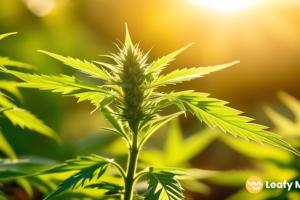
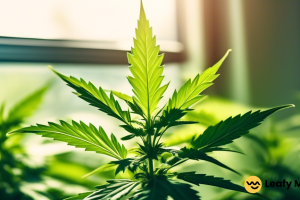





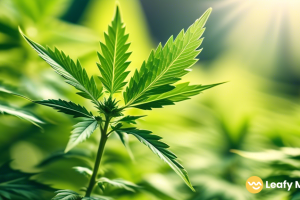
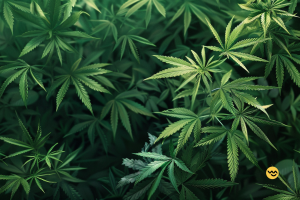
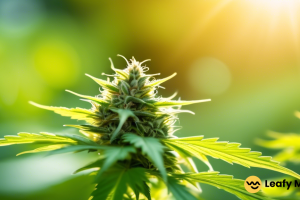
Leave a Reply